Complete Solutions to MCQS of chapter SEXUAL REPRODUCTION IN FLOWERING PLANTS of Class 12 book with complete answers and questions
| Class 12 | BIOLOGY |
| Chapter | SEXUAL REPRODUCTION IN FLOWERING PLANTS |
| NCERT FINGERTIPS | MCQS |
| Number Of Questions | 100 |
| Academic Year | 2023-24 |
Science of cultivation, breeding, marketing and arrangement of flowers is called
01:51View SolutionIdentify P-V in the given figure and select the correct option.
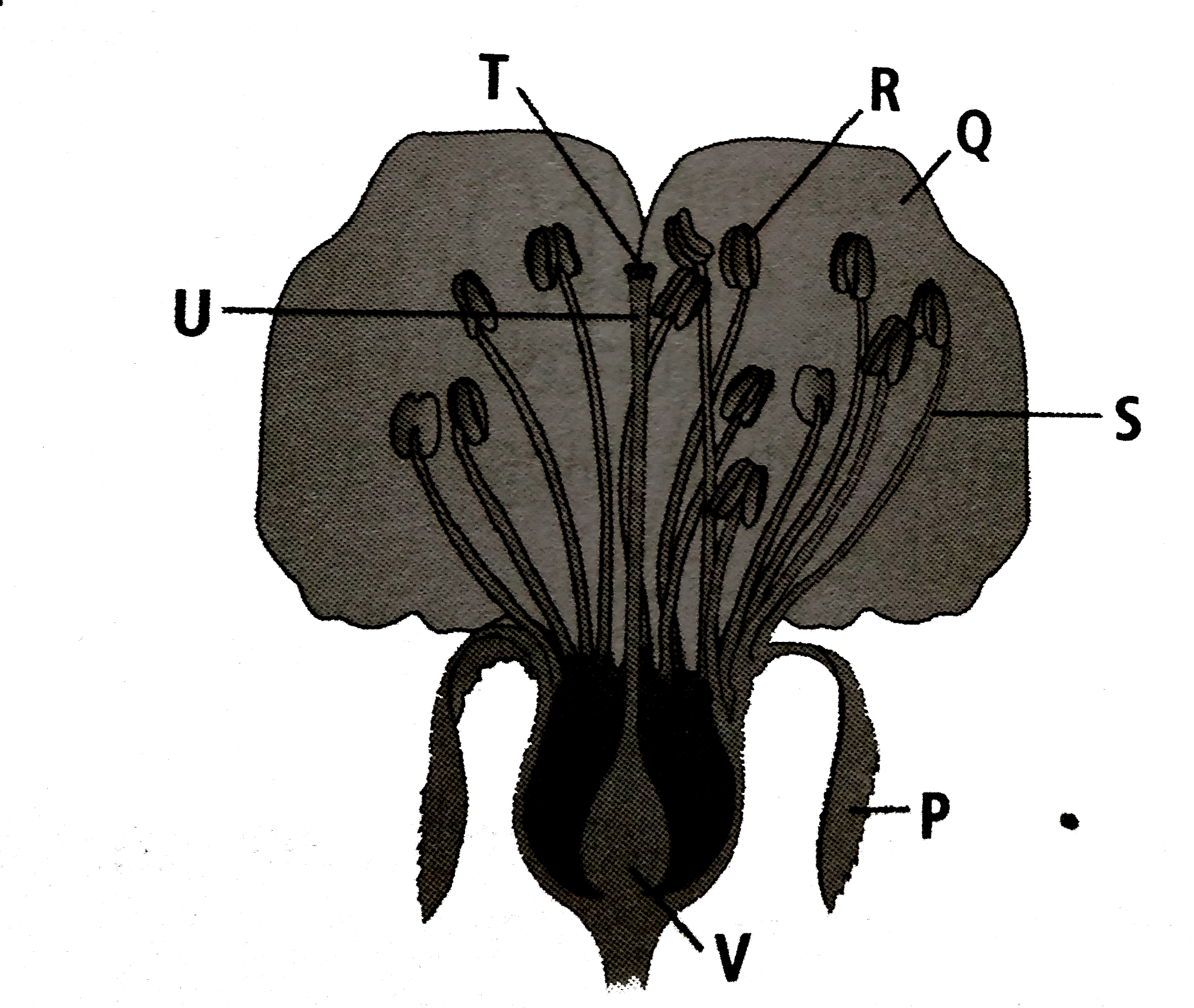 01:07View Solution
01:07View SolutionNonessential floral organs in a flowers are
01:46View SolutionThe stamens represent
01:17View SolutionSelect the incorrect statement w.r.t pedigree analysis
01:50View SolutionA dithecous anther consists of `ul((i))` microsporangia, `ul((ii))` in each lobe.
01:52View SolutionAnther is generally
02:24View SolutionThe given diagram shows microsporangium of a mature anther. Identify A,B and C.
 02:35View Solution
02:35View SolutionThe anther wall consists of four wall layers where
03:45View SolutionThe function of labelled part X is
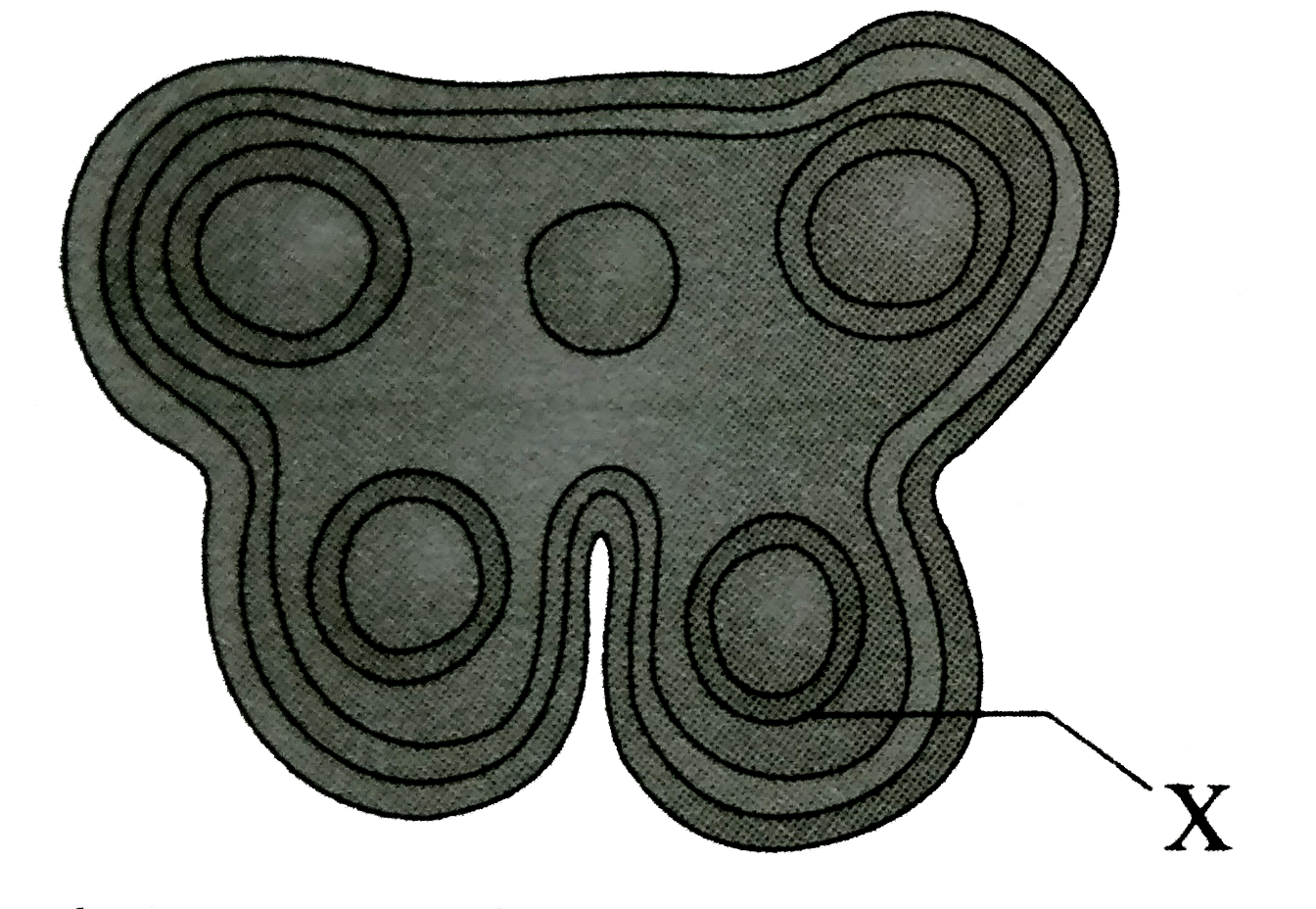 03:02View Solution
03:02View SolutionWhich of the following statements regarding the structure of microsporagium are correct ?
(i) Microsporangium is generally surrounded by four wall layers-epidermis, endothecium, middle layers and tapetum
(ii) outer three layers perform functions of protection and dehiscence of anthers.
(iii) Cells of tapetum undergo meiosis and produce micropore tetrads.04:08View SolutionCallase enzyme which dissolved callose of pollen tetrads to separate four pollens is provided by
05:26View SolutionWhich function of tapetum is correct ?
02:48View SolutionIn angiosperms various stages of reductional division can best be studied in
03:28View SolutionStudy of pollen grains is called
02:53View SolutionSeveral pollen grains form a unit designated as pollinium in Family
04:16View SolutionThe given figure represents
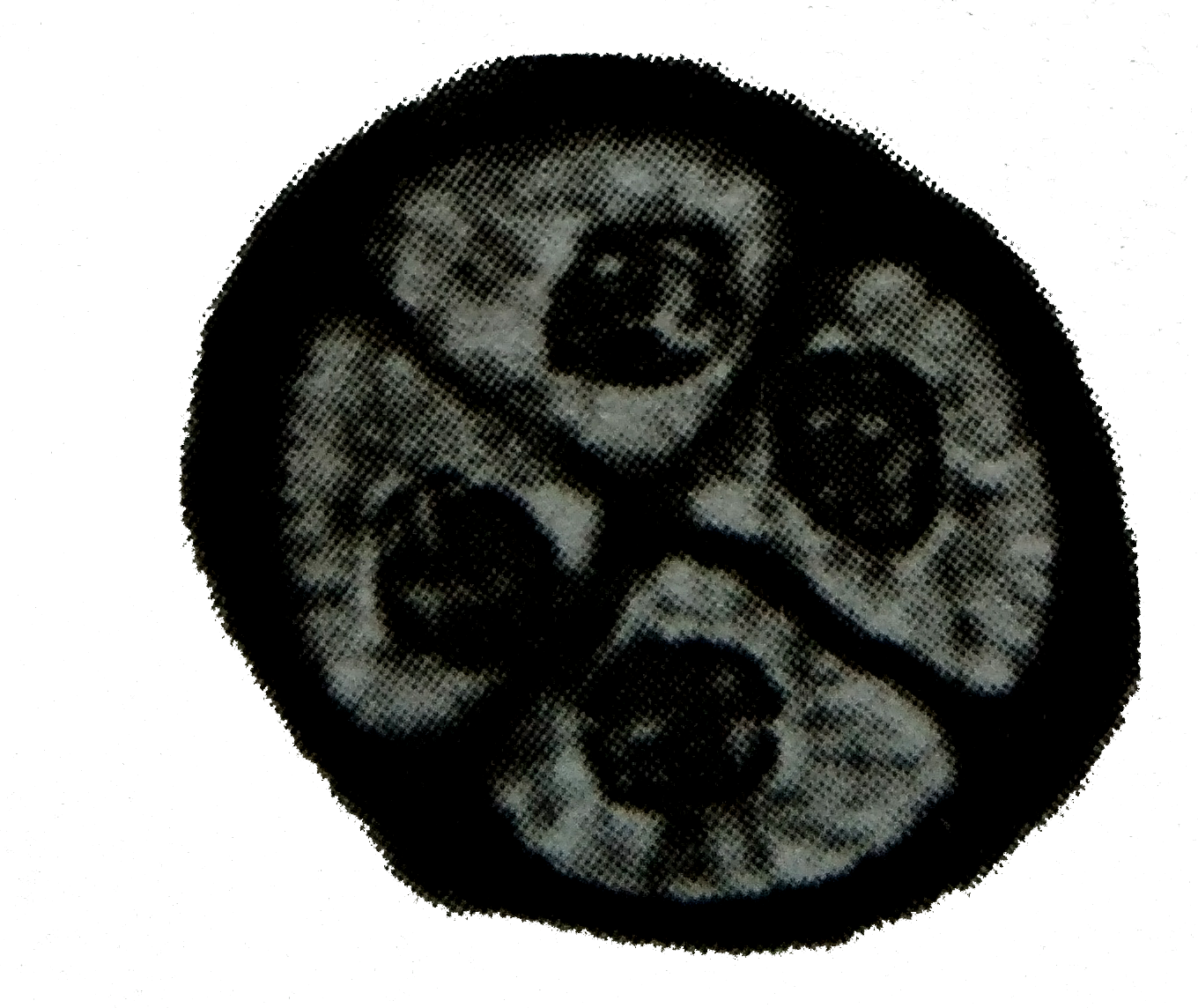 03:23View Solution
03:23View SolutionHow many pollen mother cells should undergo meiotic division to produce 64 pollen grains?
01:58View SolutionHow many meiotic divisions are required for the formation of 100 pollen grains ?
01:55View SolutionOne of the most resistant biological material present in the exine of pollen grain is
01:25View SolutionWhich of the following statements about sporopollenin is incorrect ?
03:26View SolutionWhat is the function of germ pore?
02:49View SolutionRead the given statements.
(i) Outer exine is made up of sporopollenin.
(ii) Inner intine is pecto-cellulosic in nature
(iii) Generative cell is bigger and contains abundant food reserve
(iv) Vegetative cell is small and floats in the cytoplasm of the generative cell.
Which of the given statements are not true regarding structure of pollen grain?03:52View Solution_______of the pollen grain divides to form two male gametes.
02:29View SolutionThe three cells found in a pollen grain when it is shed at 3-celled stage are
02:00View SolutionIn a fully developed male gametophyte the number of nuclei is
02:53View SolutionRefer to the given figure of reproductive structure of Papaver and identify X and Y
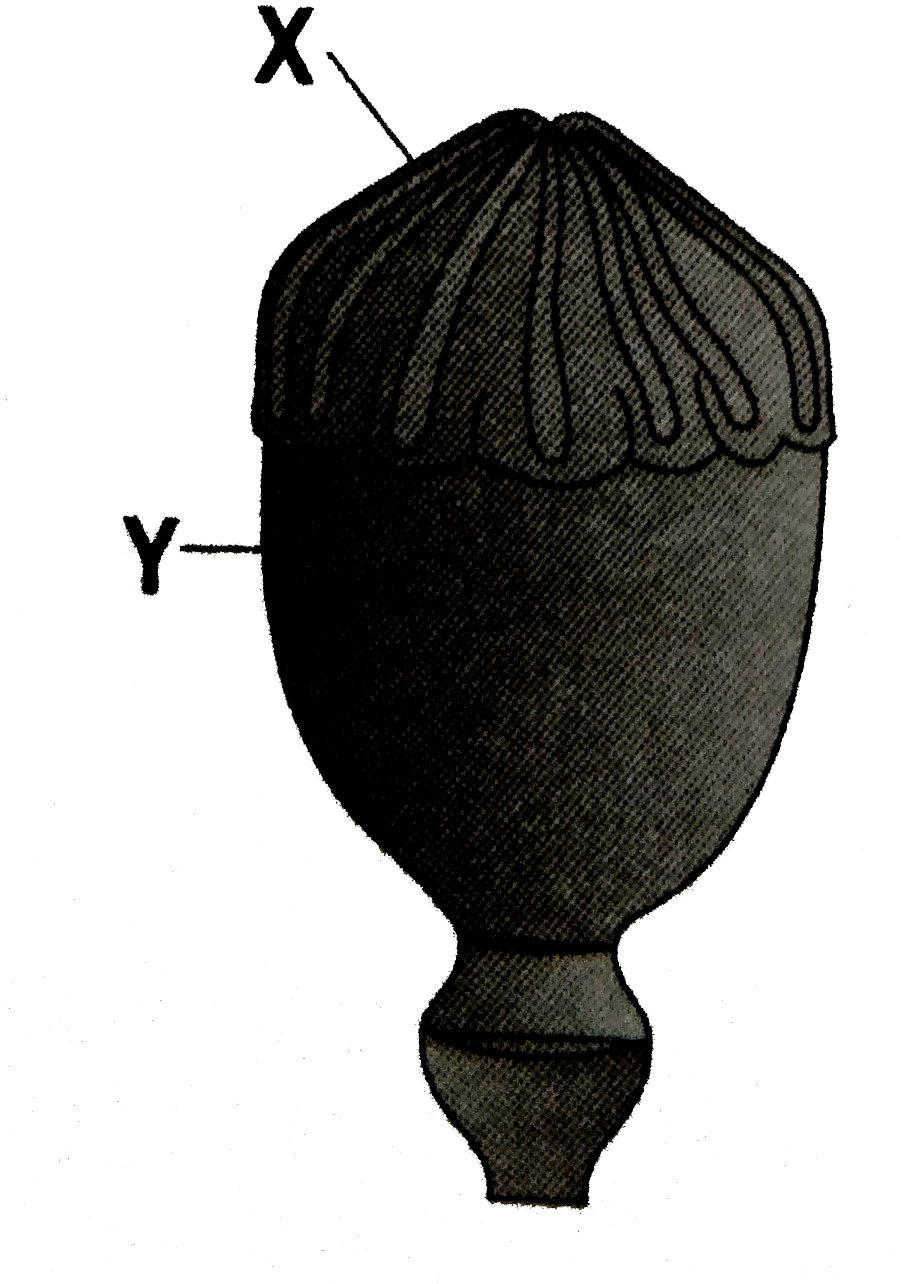 01:38View Solution
01:38View SolutionMegasporangium along with its protective integuments is called
02:12View SolutionA typical angiospermous ovule is attached to the placenta by means of a stalk called X. Body of the ovule fuses with X in the region called Y. Identify X and Y.
03:38View SolutionIdentify the parts labelled A,B,C and D in the given figure and select the correct option.
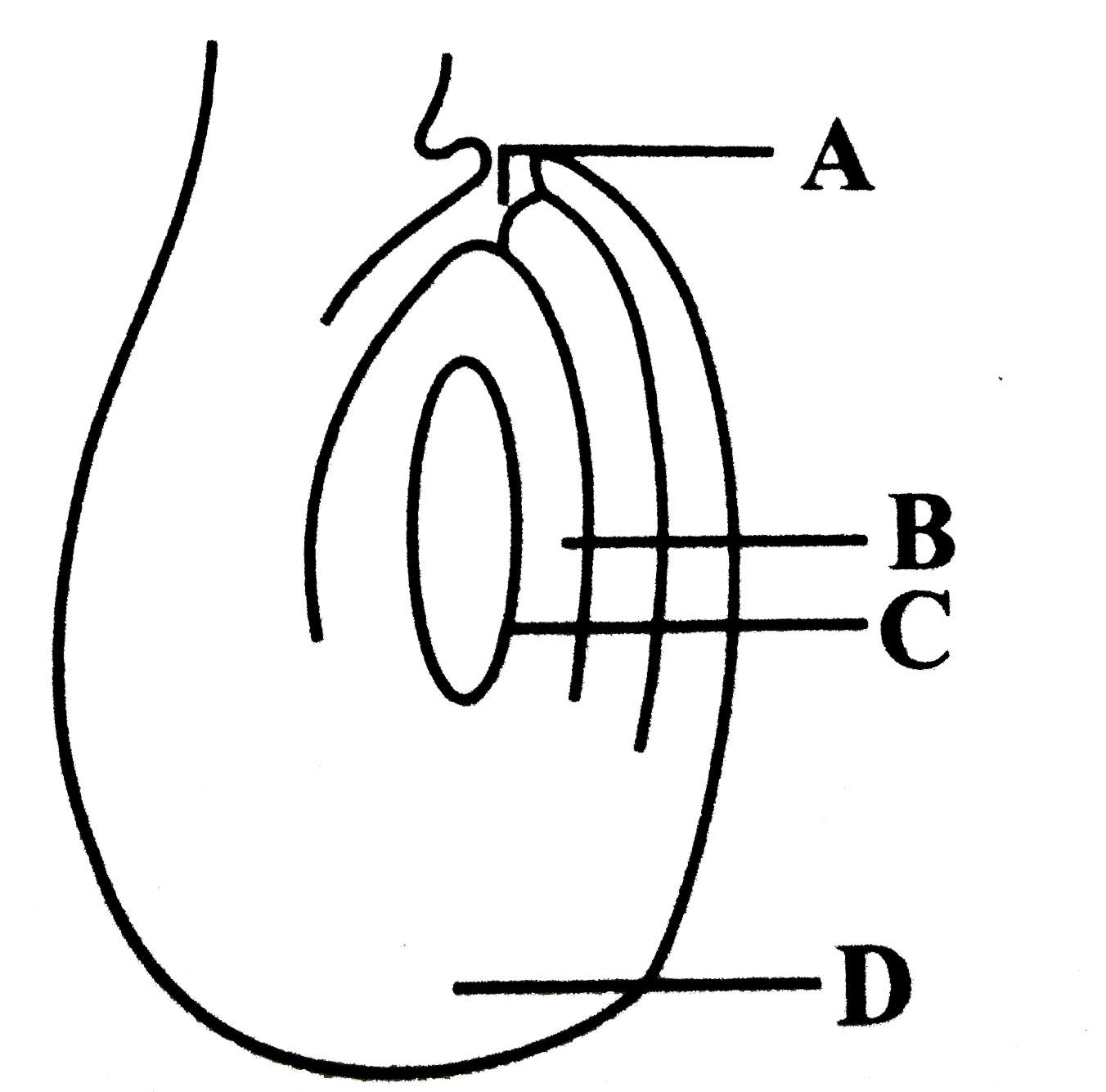 02:06View Solution
02:06View SolutionMatch column I with column II and select the correct option from the given codes.
`{:(Column I, Column II),(A."Funicle",(i)"Mass of parenchymatous cells"),(B."Hilum",(ii)"Basal part of ovule"),(C."Integument",(iii)"One or two protective layers of ovule"),(D."Chalaza",(iv)"Region where body of ovule fuses with funicle"),(E."Nucellus",(v)"Stalk of ovule"):}`05:17View SolutionMature ovules are classified on the basic of funiculus. If micropyle comes to lie close to the funiculus the ovule is termed as
03:25View SolutionWhen micropyle, chalaza and hilum lie in a straight line, the ovule is said to be
03:25View SolutionSelect the correct option regarding the ploidy level of different structures of an angiospermous ovule.
03:03View SolutionWhich of the following statements is not correct ?
05:17View SolutionThe filiform apparatus is present in
02:05View SolutionIdentify the parts labelled A,B,C and D in the given figure and select the correct option.
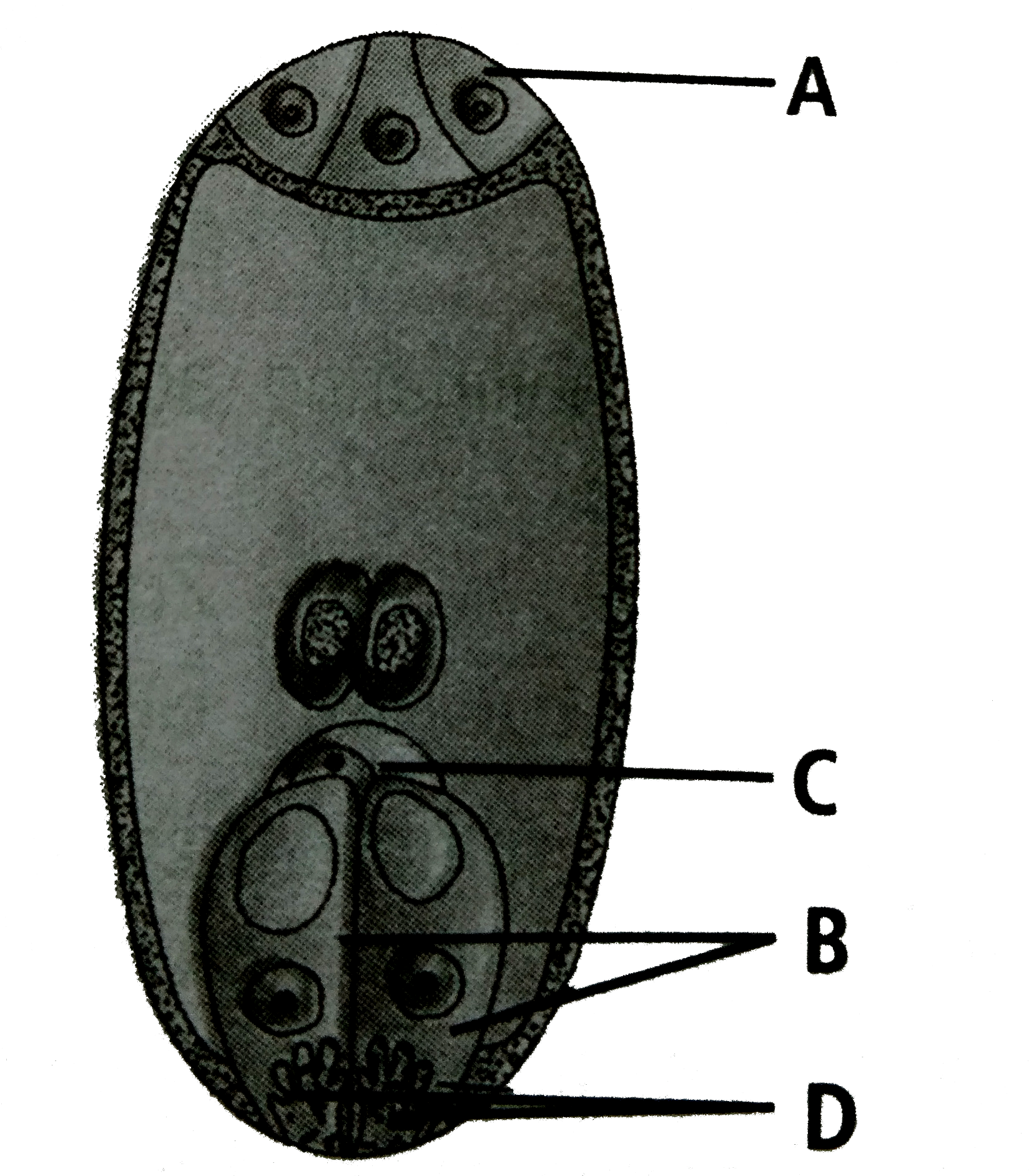 02:28View Solution
02:28View SolutionSelect the correct statements (s) regarding the structure of a mature embryo sac.
(i) Egg apparatus is situated towards chalzal end.
(ii) Antipodal cells are situated towards micropylar end.
(iii) A typical angiospermic embryo sac is 7-celled, 8-nucleate at maturity04:45View SolutionWhat is the function of filiform apparatus in an angiospermic embryo sac ?
03:15View SolutionThe female gametopyte of a typical dicot at the time of fertilisation is
01:04View SolutionPolygonum type of embryo sac is
01:46View SolutionSelect the option which correctly identify the given plant.
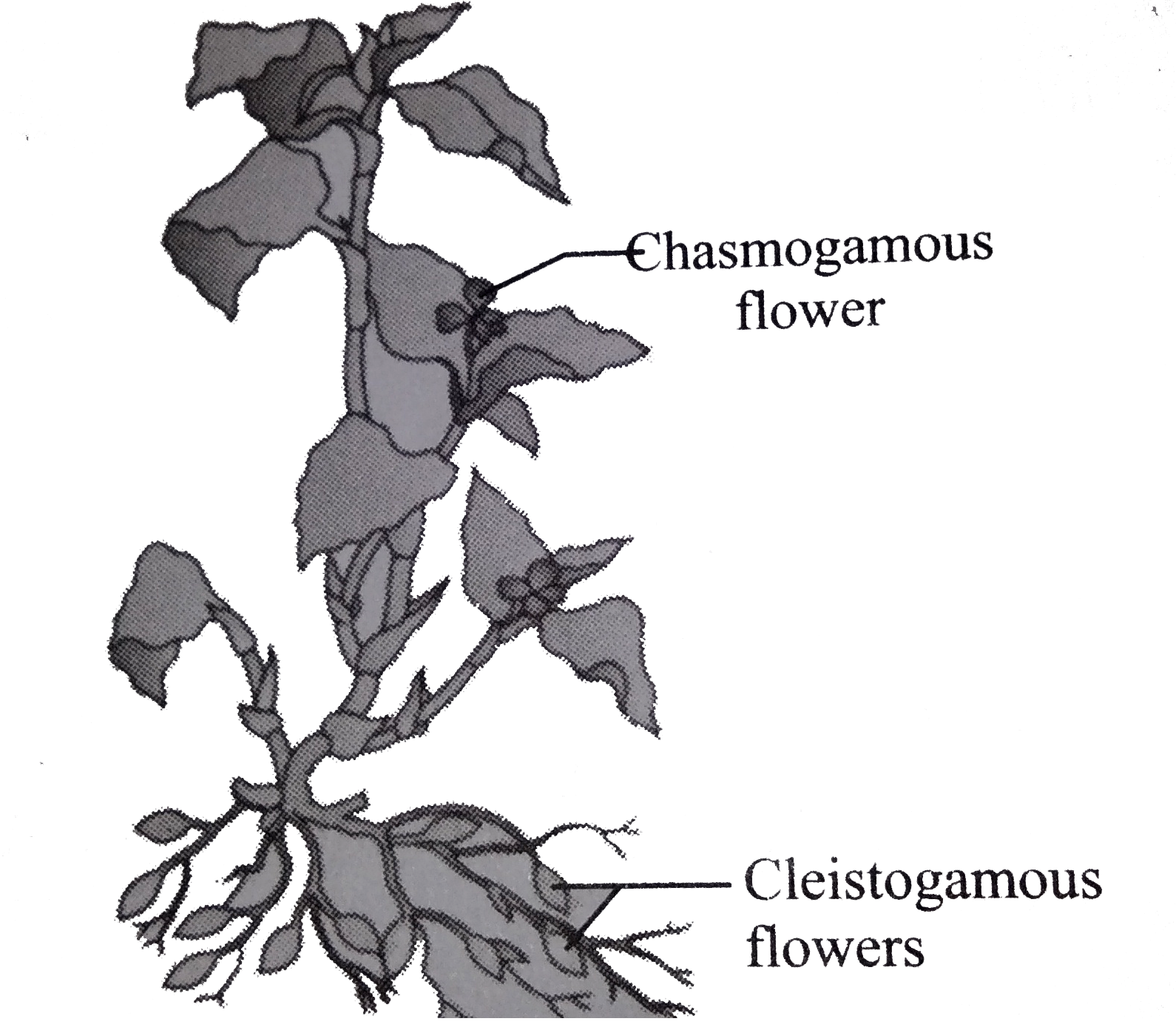 03:30View Solution
03:30View SolutionEven in absence of pollinating agents seed-setting is assured in
03:06View SolutionWhich of the following options is correct ?
02:26View SolutionThe given diagram shows two plants of the same species. Identify the types of pollination indicated at `P_(1),P_(2)` and `P_(3)`.
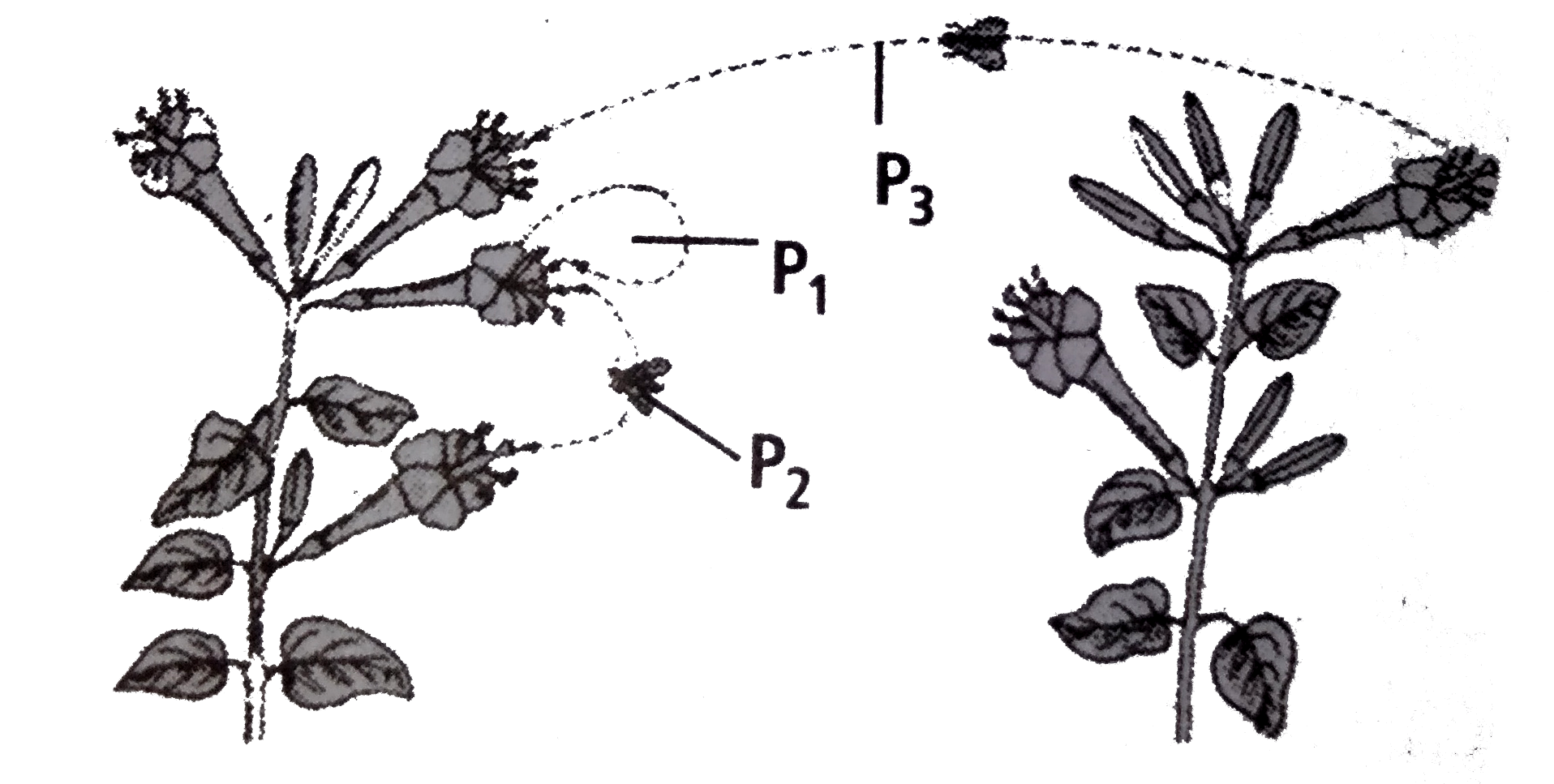 05:18View Solution
05:18View SolutionMale and femal flowers are present on different plants (dioecious) to ensure xenogamy, in
03:03View SolutionSelect the mismatched pair.
02:19View SolutionFeathery stigma occurs in
03:41View SolutionPlants with ovaries having only one or a few ovules are generally pollinated by
03:21View SolutionRefer to the given characteristics of some flowers.
(i) LIght and non-sticky pollen grains
(ii) Exserted stigmas and anthers
(iii) Large, often feathery stigmas
(iv) Flowers colourless, odourless and nectarless
(v) Common in grasses
Above features are the characteristics of02:26View SolutionWhich of the following is not a water pollination plant ?
03:44View SolutionSelect the incorrect pair of type of pollination and the corresponding pollinating agency.
03:10View SolutionSpiny or sticky pollen grains and large, attractively coloured flowers are associated with
04:19View SolutionFragrant flowers with well developed nectaries are an adaptation for
02:20View SolutionRead the given statements and select the correct option.
Statement 1: Pollination by bats is known as chiropterophily.
Statement 2 : Pollination by ants is known as ornithophily.03:31View SolutionAssertion `(A): wedge_(m(H^(o+)))` and `wedge_(m(overset(c)(O)H))` ions are very much higher than those of other ions.
Reason `(R): `It is due to proton jump from one water molecule to another resulting in a more rapid transfer of positive charge form one region to another.
(a)If both `(A)` and `(R)` are correct, and `(R)` is the correct explanation of `(A)`.
(b)If both `(A)` and `(R)` are correct, but `(R)` is not the correct explanation of `(A)`.
(c)If `(A)` is correct, but `(R)` is incorrect.
(d)If `(A)` is incorrect, `(R)` is correct.02:43View SolutionChoose the mismatched pair.
03:35View SolutionMatch column I with column II and select the correct option from the given codes.
`{:(Column I, Column II),(A."Anemophily",(i)"Grasses, Date palm"),(B."Hydrophily",(ii)"Rose,Jasmine"),(C."Entomophily",(iii)"Butea,Bignonia"),(D."Ornithophily",(iv)"Vallisneria,Ceratophyllum"):}`02:39View SolutionPollen kitt is generally found in
04:26View SolutionMatch column I with column II and select the correct option from the given codes.
`{:(ColumnI,Column II),(A."Tallest flower",(i)"Maize"),(B."Pronuba moth",(ii)"Amorphophallus"),(C."Anemophily",(iii)"Salvia"),(D."Entomophily",(iv)"Yucca"):}`04:07View SolutionIn `ul((i))` conditions, both male and female flowers are borne on same plant an example of such plants is `ul((ii))`.
View SolutionFlowering plants have developed certain outbredding devices to discourage self-pollination and encourage cross-pollination. One of these is not an examples of such outbreeding device.
04:20View SolutionWhich of these is a condition that makes flowers invariably autogamous?
03:55View SolutionHeterostyly as a contrivance for cross-pollination is found in
02:22View SolutionMatch column I with column II and select the corect option from the given codes.
`{:(Column I, Column II),(A."Monoecious",(i)"Primula"),(B."Dioecious",(ii)"Maize"),(C."Cleistogamous",(iii)"Data palm"),(D."Heterostyly",(iv)"Commelina"):}`03:50View SolutionWhich of the following labelled part of gynoecium determines the compatible nature of pollen?
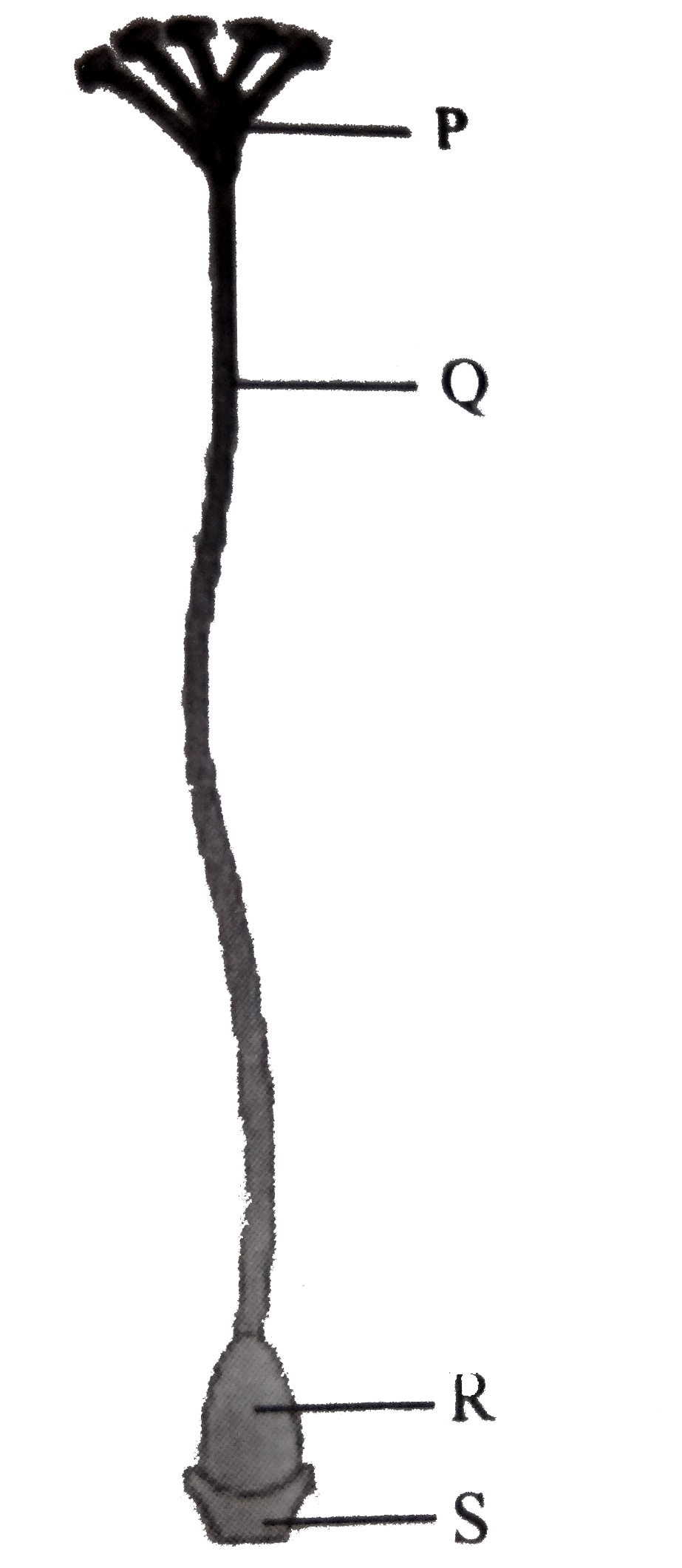 01:52View Solution
01:52View Solutionpart of the gynoecium which receives the pollen is called
01:41View SolutionRefer to the given figure of egg apparatus showing entry of pollen tube into a synergid. Identify any two of the labelled parts and select the correct option.
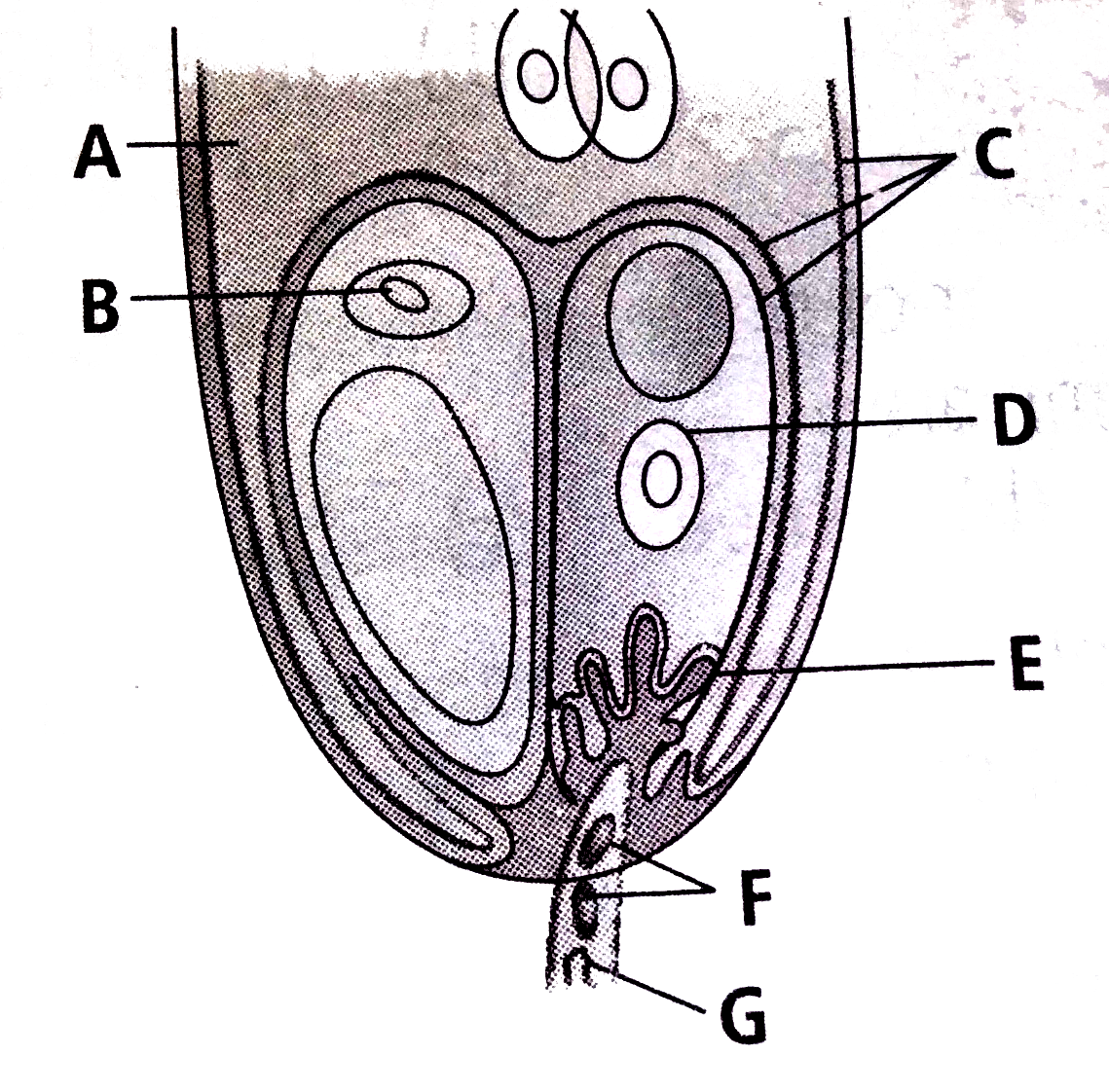 02:51View Solution
02:51View SolutionGrowth of part X is
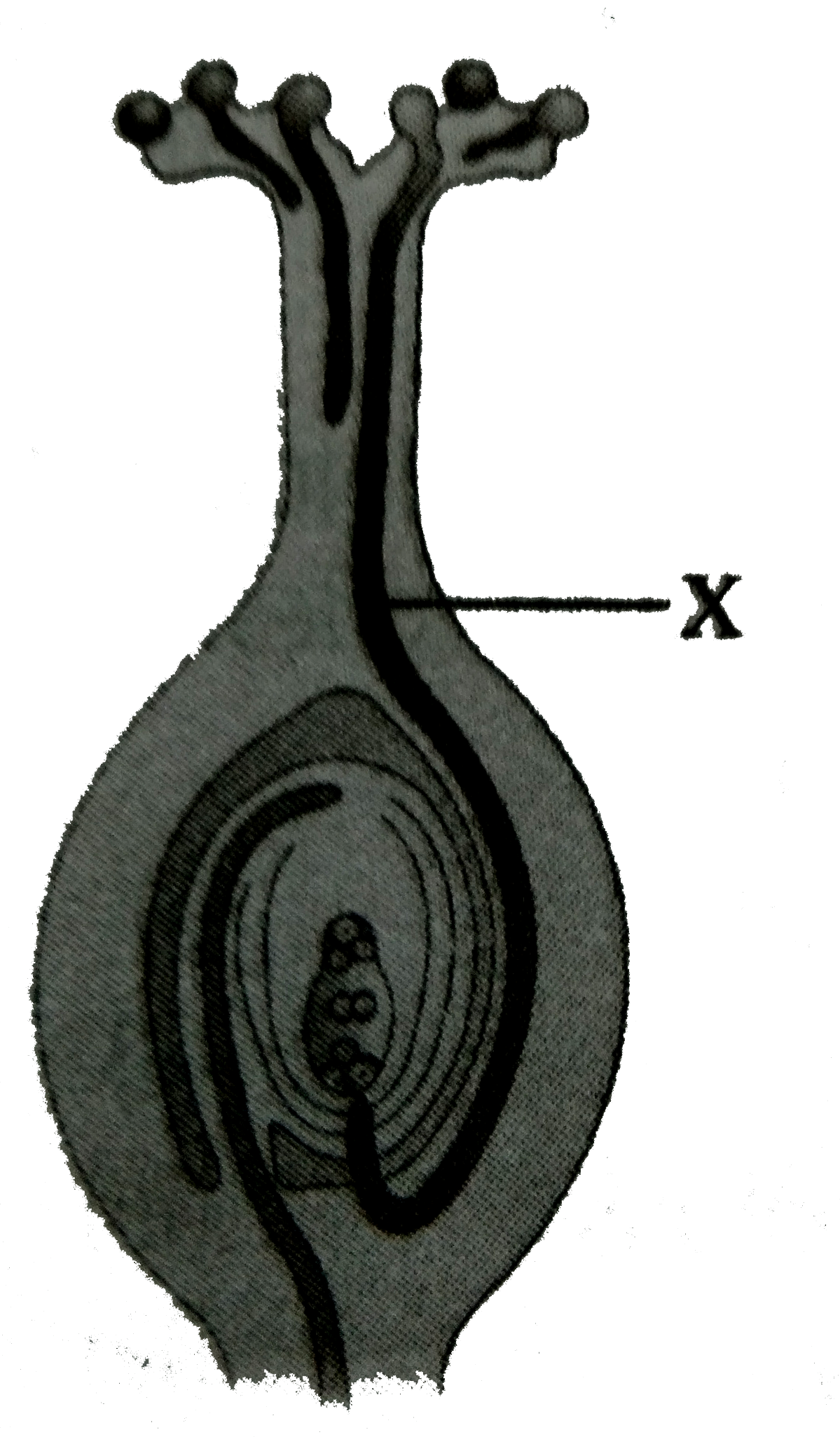 04:07View Solution
04:07View SolutionGiven below are the events that are observed in an artificial hybridisation programme. Arrange them in the correct sequential order and select the correct option.
1. Re-bagging 2.Selection of parents
3. Bagging 4. Dusting the pollen on stigma 5. Emasculation
6. Collection of pollen from male parent03:56View SolutionDuring the process of fertilisation the pollen tube of the pollen grain usually enters the embryo sac through
03:20View SolutionFusion of one of the male gametes with egg nucleus is referred to as
03:13View SolutionWhich of the following statements is/are correct ?
(i) Endothecium lies below epidermis
(ii) Fusion of egg with male gamete is called apogamy
(iii) Synergids are haploid.
(iv) The point at which funicle touches the ovule is raphe.03:07View SolutionThe total number of nuclei involved in double fertilisation in angiosperms are
02:53View SolutionWhich one of the following events takes place after double fertilisation ?
02:31View SolutionTriple fusion in Capsella bursa pastoris is fusion of male gamete with
04:14View SolutionDouble fertilisation was first discovered in 1898 by_________in Fritillaria and Lilium
03:03View SolutionStudy the following statements and select the correct option.
(i) Tapetum nourishes the developing pollen grains.
(ii) Hilum represents the junction between ovule and funicle.
(iii) In aquatic plants such as water hyacinth and waterlily, pollination occurs by water.
(iv) The primary endosperm nucleus is triploid.02:15View SolutionMilk of tender coconut represents ------ and the surrounding white coconut meal represents -------.
04:15View SolutionIdentify A in the given diagram.
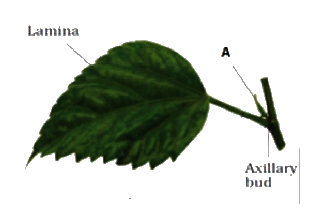 02:16View Solution
02:16View SolutionMorgan hybridised yellow-bodied, white-eyed females to brown-bodied red-eyed males and intercrossed their `F_(1)` progeny. He observed that
(a) `F_(2)` ratio was deviated very significantly from the `9:3:3:1` ratio
(b) Both genes did not segregate independently of each other
(c) Recombinant types are not obtained in `F_(2)` generation
(d) Both genes segregate independently of each other
Select the correct set of statements :02:26View SolutionIf an endosperm cell of an angiosperm contains 24 chromosomes, the number of chromosomes in each cell of the root will be
01:49View SolutionThe cell of endosperm have 24 chromosomes. What will be the number of chromosomes in the gametes?
01:35View SolutionIn angiosperms, normally after fertilisation
02:53View SolutionThe true embryo develops as a result of fusion of
04:22View SolutionFather of India embryology is
01:54View SolutionIdentify the different parts of a typical dicot embryo labelled as A,B and C and select the correct option.
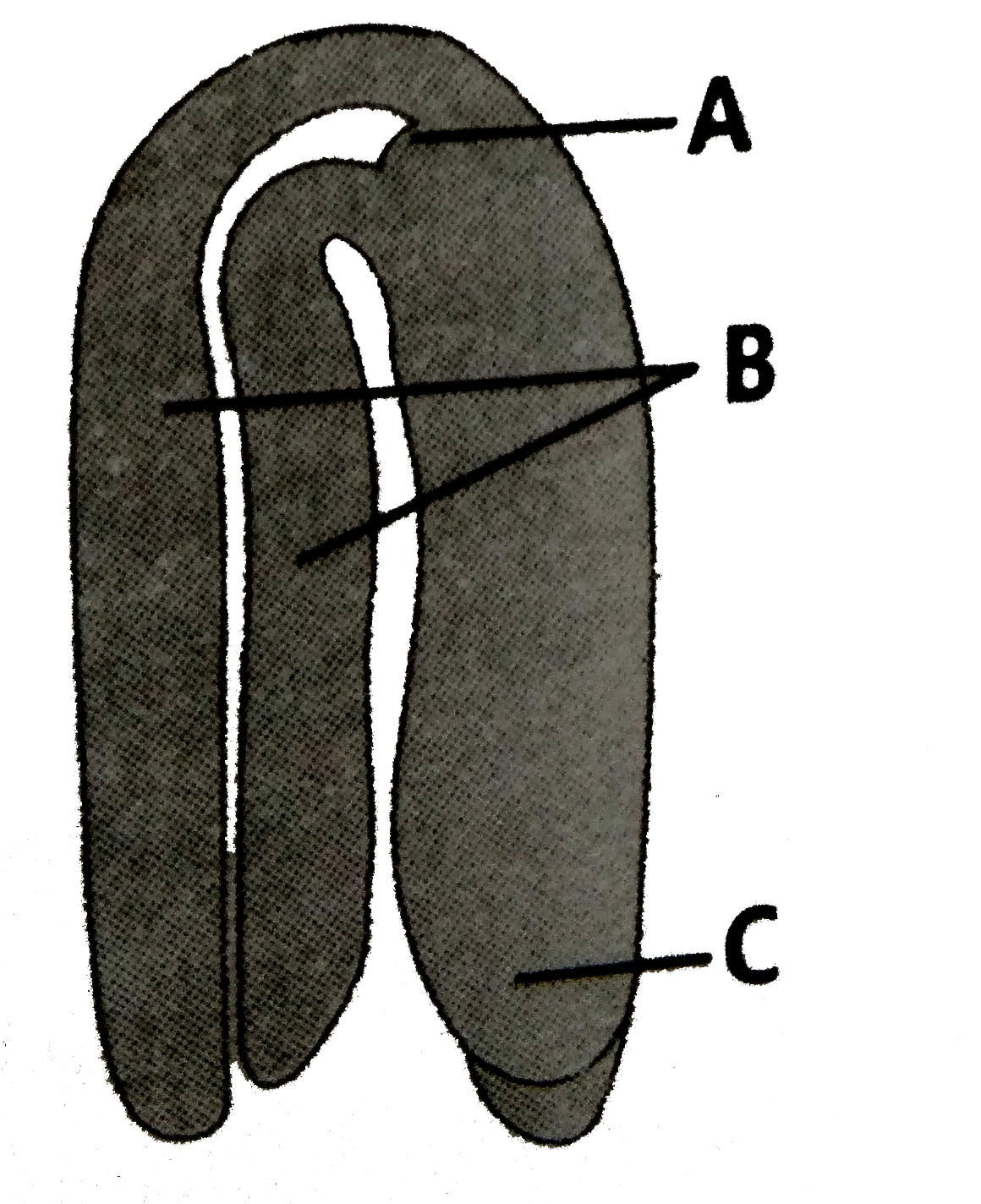 03:14View Solution
03:14View SolutionThe portion of embryonal axis between plumule (future shoot) and cotylendons is called
03:19View SolutionIn the following diagram label A and B
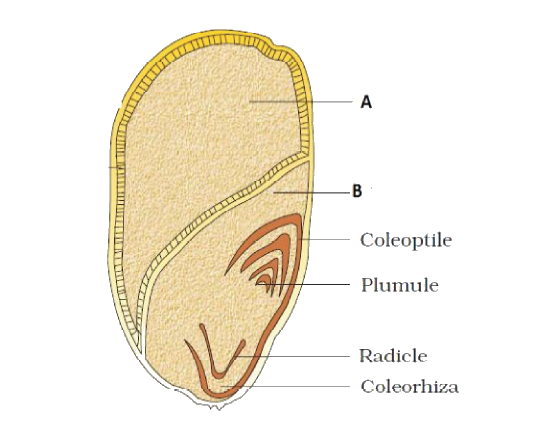 03:02View Solution
03:02View Solutionwhich of the following statements is/are incorrect?
02:58View SolutionColeoptile and coleorhiza are the protective sheats covering labelled part_____and_____respectively.
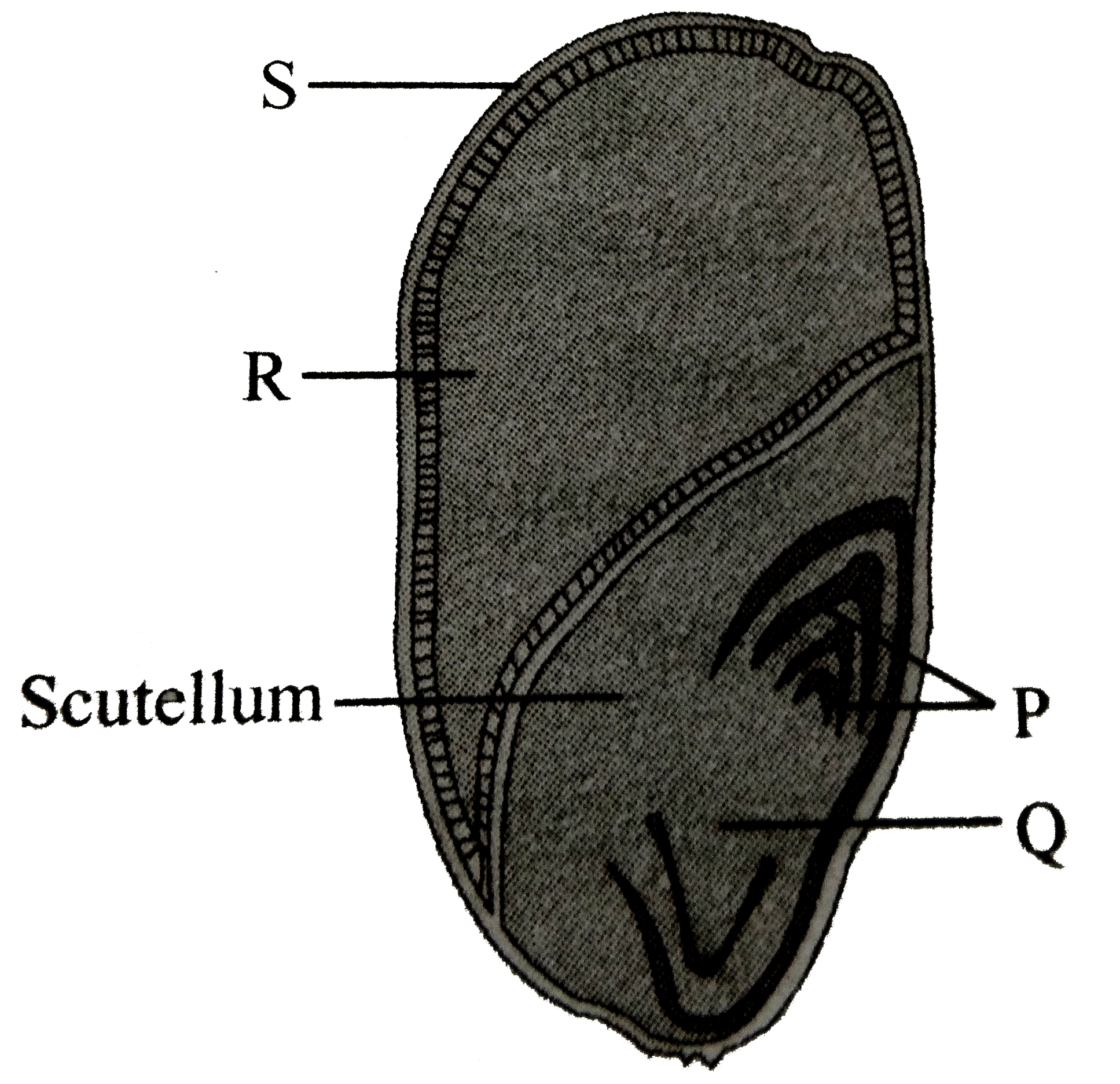 02:08View Solution
02:08View SolutionNon-endospermic seeds are found in
01:58View SolutionEndosperm is completely consumed by the developing embryo in
03:41View SolutionEndospermic seeds, are found in
02:16View SolutionIn albuminous seeds, food is stored in ______and in exalbuminous seeds, food is stored in_______.
01:50View SolutionPersistent nucellus is called as______________and is found in __________.
02:07View SolutionIdentify the parts labelled as A,B,C and D in the given figure and select the correct option from the given codes.
 View Solution
View SolutionRefer to the given figure and identify the parts labelled P,Q,R and S.
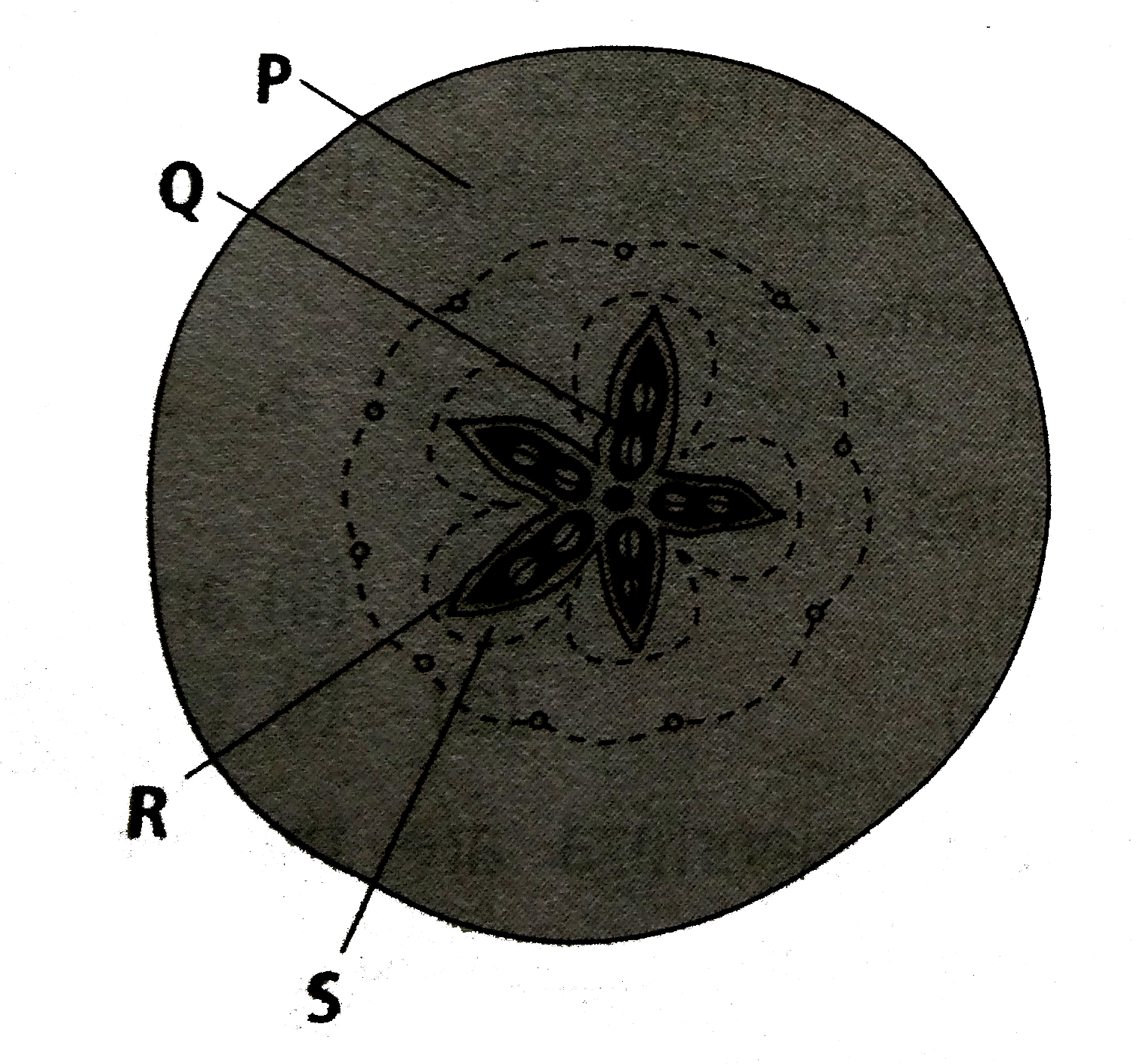 View Solution
View SolutionIdentify the wrong statement regarding post-fertilisation development.
View SolutionMatch column I with column II and select the correct option from the given codes.
`{:(Column I,Column II),(A."Ovary",(i)"Groundnut,mustard"),(B."Ovule",(ii)"Guava,organe,mango"),(C."Wall of ovary",(iii)"Pericarp"),(D."Fleshy furits",(iv)"Seed"),(E."Dry fruits",(v)"Fruit"):}`04:16View Solution
MCQS questions and complete solutions for chapter SEXUAL REPRODUCTION IN FLOWERING PLANTS of MTG BIOLOGY (ENGLISH) of Class 12
